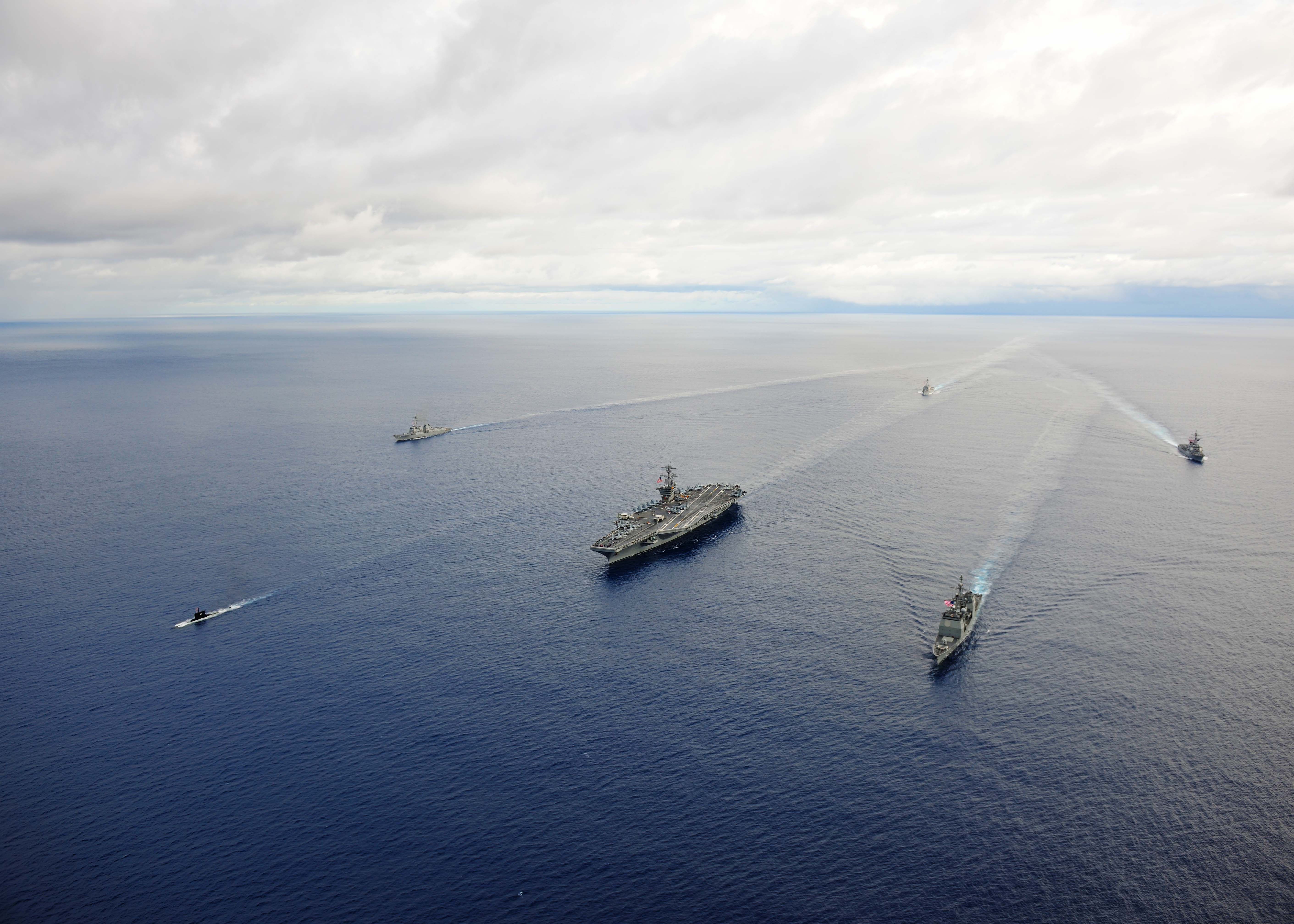
Lawmakers and Navy leadership spent the past year going back and forth over how to count the number of ships in the Battle Force fleet. The Navy made some changes last spring that immediately increased the size of the fleet and complicated the ship-counting effort: certain ships would count only if they were forward deployed but not if they returned home to the United States. Congress pushed back, passing into law what was essentially a compromise counting rule – and the third methodology to be used in a one-year span.
As a result of the back-and-forth, the Navy’s most recent ship-count projection it submitted to Congress contains two sets of figures: one with the Navy’s preferred method, and one following Congress’s rule.
The dueling methods have led to confusing charts and tables earlier this year, but the conflict over how to count Navy ships is not new – the Carter and Reagan administrations both created their own sets of rules for counting ships.
For most of the Navy’s history, the number to focus on was the number of active ships in the fleet – those that had been commissioned into the Navy and were manned by active duty crews. Naval Reserve Force ships were not included.
The Carter administration, however, created a Ship Operating Forces method for counting ships, which included “all active, reserve, and civilian-manned ships owned by the Navy,” according to a 1985 report by the Congressional Budget Office.
When the Reagan Administration came in, officials – including Navy Secretary John Lehman, of the 600-ship Navy fame – decided that many of the ships “were not considered sufficiently important by the administration to be included against the 600-ship goal,” the CBO report said. Lehman created the Battle Force ship count that was used for three and a half decades, until current Secretary Ray Mabus changed the rules in March 2014.
The idea behind the Battle Force count method is “to include in the count ships that are readily deployable overseas and which contribute to the overseas combat capability of the Navy,” Ron O’Rourke, naval affairs specialist at the Congressional Research Service, explained to USNI News on Friday. It doesn’t discriminate between active duty and Naval Reserve Force ships, he said, as long as a ship meets those requirements.
As a result, Defense Department ships that support Army and Air Force operations do not count, nor do Maritime Prepositioning Force (MPF) ships that primarily support Marines ashore.
O’Rourke noted a quirk in these requirements in the footnotes of a recent report, writing that previously planned but since canceled MPF (Future) ships “would have contributed to Navy combat capabilities (for example, by supporting Navy aircraft operations). For this reason, the ships in the planned MPF(F) squadron were counted by the Navy as battle force ships” even though current MPF ships were not counted.
These Battle Force counting rules were not formally changed until just recently – though the Navy did, in practice, make at least one change. For example, O’Rourke said, older classes of patrol craft were deemed eligible to be counted as Battle Force ships, including the Pegasus-class hydrofoil boat (PHM-1). But the Navy at some point changed its view about whether to include patrol craft in the count and did not include the Cyclone-class patrol ships (PC-1) when they entered the fleet.
Last spring, Mabus announced a ship-counting rules change in a letter to Congress. Patrol craft and mine countermeasures ships would count as Battle Force Ships, but only if they were operating in the Forward Deployed Naval Forces. Those ship classes, if stationed stateside, would not count. Hospital ships and a High Speed Transport would count. And so would cruisers laid up for extended modernization periods.
Congress stepped in, rejecting the idea of counting PCs, even though the older class of patrol craft were counted, and hospital ships. The current counting method under the law, therefore, mixes the Reagan-era method and the Mabus-proposed method. Future historians will have to bear in mind that the Fiscal Year (FY) 2014 Navy budget request spoke of projected ship counts in the Lehman-era methodology, the FY 2015 budget request in the short-lived Mabus methodology, and the FY 2016 budget request in both the Mabus and the congressionally mandated methodologies.
Chief of Naval Operations Adm. Jonathan Greenert wrote in his testimony to Congress that as of Jan. 1, the Navy had 288 ships by the Mabus methodology but only 279 by Congress’s; would have 291 in FY 2016 by the Mabus methodology but only 282 by Congress’s; and would have either 308 or 304 in FY 2020, with the gap closing as PCs retire.
The chart includes the footnote: Navy revised the accounting guidelines for its Battle Force according to requirements set forth in the FY2015 National Defense Authorization Act. Numbers in this statement are not directly comparable to those used in prior testimony, see chart below. The NDAA prohibits inclusion of “…patrol coastal ships, non-commissioned combatant craft specifically designed for combat roles, or ships that are designated for potential mobilization.” Ships that were counted last year, but are no longer counted, are Patrol Craft (PC) and Hospital Ships (T-AH).





